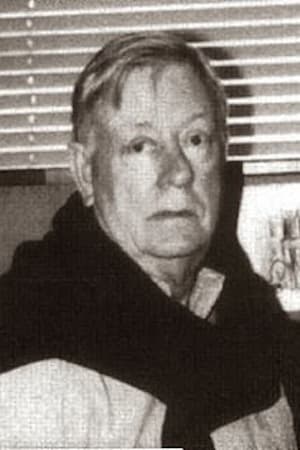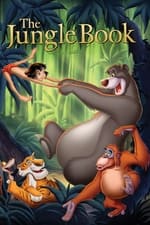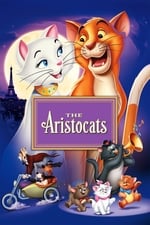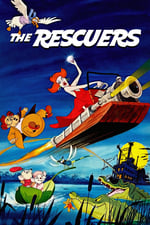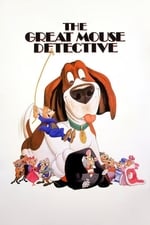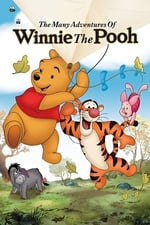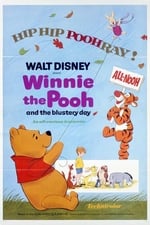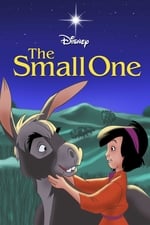Informazioni Personali
Conosciuto Per Scrittura
Crediti Conosciuti 14
Sesso Maschio
Compleanno 29 agosto, 1929
Giorno della Morte 5 marzo, 2005 (75 years old)
Luogo di Nascita Pasadena, California, USA
Conosciuto anche come
- Vance Bryden Gerry
Valutazione Contenuto
100
Sì! Sembra buono!
Entra per segnalare un problema
Biografia
Regarded as one of the most creative and talented story artists in the animation industry, Gerry joined the Walt Disney Studios in 1955 after studying at the Chouinard Art Institute. He rose quickly through the ranks to become a layout artist. He contributed to the television shows "Goofy's Cavalcade of Sports" and "How to Relax"; the short features "The Truth About Mother Goose" and "Donald in Mathmagic Land"; and the features "101 Dalmatians" and "The Sword in the Stone." Gerry moved to the studio's story department on "The Jungle Book," Walt Disney's last animated feature. Looking back on that collaboration, Gerry said, "There was an aura about Walt: When he came into the room, you felt it. He focused very closely on what the characters would do and say." Gerry later made major contributions to "Dalmatians," "The Aristocats," "Robin Hood," "The Rescuers," "The Many Adventures of Winnie the Pooh" and "The Fox and the Hound." In "The Rescuers," he drew the storyboards, a shot by shot blueprint, for the sequence in which kidnapper Madame Medusa primps before a mirror while cruelly dismissing Penny's wish to return to the orphanage: "Adopted? What makes you think anyone would want a homely little girl like you?" In the book "Before the Animation Begins: The Art and Lives of Disney Inspirational Sketch Artists," animation historian John Canemaker noted that Gerry needed only a few drawings to establish the type of shot, the mood of the sequence, the character's expressions, etc. Working from Gerry's sketches, animators developed their characters' actions: when Medusa would pull off her false eyelashes; how Penny would bow her head in resignation. Gerry told Canemaker how he liked to work. "I'd just as soon start with a title of a picture and start dreaming into it," he said. "A script is restricting because it tells you too much. I'd rather start earlier than that and look for possibilities for animation and entertainment, rather than story elements or structure." Gerry later received a story adaptation credit for "The Great Mouse Detective" and worked on the storyboards for "Fantasia/2000." Gerry shifted to visual development and character design in 1995, and contributed to "Pocahontas," "The Hunchback of Notre Dame," "Tarzan" and "Home on the Range." Gerry also operated the Weatherbird Press, which published fine books. -http://articles.latimes.com/2005/mar/11/local/me-gerry11
Regarded as one of the most creative and talented story artists in the animation industry, Gerry joined the Walt Disney Studios in 1955 after studying at the Chouinard Art Institute. He rose quickly through the ranks to become a layout artist. He contributed to the television shows "Goofy's Cavalcade of Sports" and "How to Relax"; the short features "The Truth About Mother Goose" and "Donald in Mathmagic Land"; and the features "101 Dalmatians" and "The Sword in the Stone." Gerry moved to the studio's story department on "The Jungle Book," Walt Disney's last animated feature. Looking back on that collaboration, Gerry said, "There was an aura about Walt: When he came into the room, you felt it. He focused very closely on what the characters would do and say." Gerry later made major contributions to "Dalmatians," "The Aristocats," "Robin Hood," "The Rescuers," "The Many Adventures of Winnie the Pooh" and "The Fox and the Hound." In "The Rescuers," he drew the storyboards, a shot by shot blueprint, for the sequence in which kidnapper Madame Medusa primps before a mirror while cruelly dismissing Penny's wish to return to the orphanage: "Adopted? What makes you think anyone would want a homely little girl like you?" In the book "Before the Animation Begins: The Art and Lives of Disney Inspirational Sketch Artists," animation historian John Canemaker noted that Gerry needed only a few drawings to establish the type of shot, the mood of the sequence, the character's expressions, etc. Working from Gerry's sketches, animators developed their characters' actions: when Medusa would pull off her false eyelashes; how Penny would bow her head in resignation. Gerry told Canemaker how he liked to work. "I'd just as soon start with a title of a picture and start dreaming into it," he said. "A script is restricting because it tells you too much. I'd rather start earlier than that and look for possibilities for animation and entertainment, rather than story elements or structure." Gerry later received a story adaptation credit for "The Great Mouse Detective" and worked on the storyboards for "Fantasia/2000." Gerry shifted to visual development and character design in 1995, and contributed to "Pocahontas," "The Hunchback of Notre Dame," "Tarzan" and "Home on the Range." Gerry also operated the Weatherbird Press, which published fine books. -http://articles.latimes.com/2005/mar/11/local/me-gerry11
Scrittura
|
||||||
|
||||||
|
||||||
|
||||||
|
||||||
|
||||||
|
||||||
|
||||||
|
Direzione
|
|||
|
Troupe
|
Effetti Visivi
|
